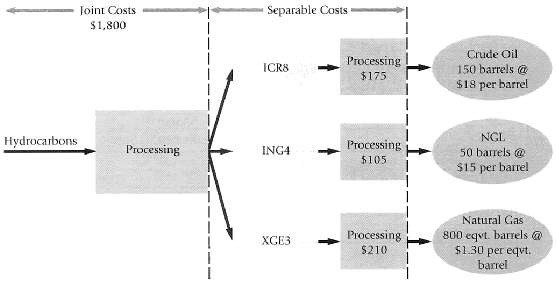Joint-cost allocation, process further. Sinclair Oil & Gas, a large energy conglomerate, jointly processes purchased hydrocarbons to
Question:
Joint-cost allocation, process further. Sinclair Oil & Gas, a large energy conglomerate, jointly processes purchased hydrocarbons to generate three non-saleable intermediate products: ICR8, ING4, and XGE3. These intermediate products are further processed separately to produce Crude Oil, Natural Gas Liquids (NGL) and Natural Gas (measured in liquid equivalents). An overview of the process and results for August 2009 are shown here (Note: The numbers are small to keep the focus on key concepts):

A new federal law has recently been passed that taxes crude oil at 30% of operating income. No new tax is to be paid on natural gas liquid or natural gas. Starting August 2009, Sinclair Oil & Gas must report a separate rate product-line income statement for crude oil. One challenge facing Sinclair Oil & Gas is how to allocate the joint cost of producing the three separate saleable outputs. Assume no beginning or ending inventory.
1. Allocate the August 2009 joint cost among the three products using
a. Physical-measure method
b. NRV method.
2. Show the operating income for each product using the methods in requirement 1.
3. Discuss the pros and cons of the two methods to Sinclair Oil & Gas for making decisions about product emphasis (pricing, sell-or-process further decisions, and so on).
4. Draft a letter to the taxation authorities on behalf of Sinclair Oil & Gas that justifies the joint-cost- allocation method you recommend Sinclairuse.
Ending InventoryThe ending inventory is the amount of inventory that a business is required to present on its balance sheet. It can be calculated using the ending inventory formula Ending Inventory Formula =...
Step by Step Answer:

Cost Accounting A Managerial Emphasis
ISBN: 978-0136126638
13th Edition
Authors: Charles T. Horngren, Srikant M.Dater, George Foster, Madhav





